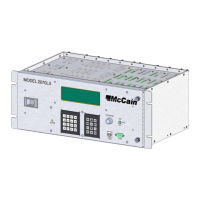16
A2 INSTALL: When A2 slot on serial motherboard is used, this line drives to GND forcing the output of
the inverter gate to HIGH. This line enables the corresponding differential line drivers for SP-1 and SP-2
transmission.
A3 INSTALL: When A3 slot on serial motherboard is used, this line drives to GND forcing the output of
the inverter gate to HIGH. This line enables the corresponding differential line drivers for SP-5
transmission.
2.4.1.12 SD CARD Circuit
It is implemented by a SD Card push in, push out connector, two quadruple bus buffer gate, resistors and
a PNP Transistor BC807. This circuit it is controlled by four lines: CS_SDCARD, SPI_CLK, SPI_MOSI
and SPI_MISO. The CS_SDCARD line is used to select and deselect the chip, the SPI_CLK line it is
generated by the master and it is the clock signal, the SPI_MOSI it is the data signal generated by the
master which it is read by the slave, in this case the SD Card and the SPI_MISO line it is the data signal
generates by the slave and which is read by the master.
2.4.2 Engine Board
The Engine Board is the brain of the 2070LX controller; all computational functions are concentrated on
this board. It is comprised of basically four sub-systems: Processor, Memory, Communications and Reset
management. These sub-systems are comprised of the Processor and some interfaces and support
circuitry.
The engine provides two 50-position interface connectors and four standoff holes to allow the installation
onto a Host Board. Four 4-40 hex threaded standoffs are used between the modules and 4-40 mating
screws to fix them together.
Below are the sub-systems with a little explanation about how they are comprised and the intended
functionality.
2.4.2.1 Microprocessor
The PowerQUICC II Pro Processor MPC8360 takes care of all operations and processes performed on
the Engine board:
It runs the application software.
Administers the address, data and control buses for communicating to memories and other
peripheral devices.
Manages read/write memory operations for storage and data collection.
Controls the communications: Seven serial ports, two Ethernet ports, one USB port, one SPI bus,
one local I2C bus, one BDM bus.
Monitors and sets the status of important input/output signals (Powerup, Powerdown, Linesync,
Datakey present, CPU Active, CPU Reset, etc).

